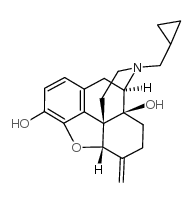New pharmacological treatment strategies for relapse prevention.
Rainer Spanagel, Valentina Vengeliene
Index: Curr. Top. Behav. Neurosci. 13 , 583-609, (2013)
Full Text: HTML
Abstract
Here we discuss treatment strategies that are based on pharmacological interventions to reduce craving and relapse in alcohol-dependent patients. We will first provide a historical overview about relapse prevention strategies. We will then review the development of disulfiram, naltrexone, acamprosate, and nalmefene and discuss their neurobiological modes of action. Then the concept of convergent genomic analysis will be introduced for the discovery of new molecular treatment targets. Finally, we will provide convincing evidence for the use of N-methyl-D-aspartate (NMDA) receptor channel blockers as substitution drugs. Important conclusions of this review are: (i) learning from other addictive substances is very helpful-e.g., substitution therapies as applied to opiate addiction for decades could also be translated to alcoholics, (ii) the glutamate theory of alcohol addiction provides a convincing framework for the use of NMDA receptor antagonists as substitution drugs for alcohol-dependent patients, (iii) a combination of behavioral and pharmacological therapies may be the optimal approach for future treatment strategies-one promising example concerns the pharmacological disruption of reconsolidation processes of alcohol cue memories, (iv) given that many neurotransmitter systems are affected by chronic alcohol consumption, numerous druggable targets have been identified; consequently, a "cocktail" of different compounds will further improve the treatment situation, (v) in silico psychopharmacology, such as drug repurposing will yield new medications, and finally, (vi) the whole organism has to be taken into consideration to provide the best therapy for our patients. In summary, there is no other field in psychiatric research that has, in recent years, yielded so many novel, druggable targets and innovative treatment strategies than for alcohol addiction. However, it will still be several years before the majority of the "treatment-seeking population" will benefit from those developments.
Related Compounds
| Structure | Name/CAS No. | Molecular Formula | Articles |
|---|---|---|---|
 |
Nalmefene
CAS:55096-26-9 |
C21H25NO3 |
|
Treatment of alcohol dependence: recent progress and reducti...
2014-12-01 [Minerva Med. 105(6) , 447-66, (2014)] |
|
Pharmacotherapy for adults with alcohol use disorders in out...
2014-05-14 [JAMA 311(18) , 1889-900, (2014)] |
|
In vivo characterization of the opioid antagonist nalmefene ...
2010-04-10 [Life Sci. 86(15-16) , 624-30, (2010)] |
|
Structural basis for μ-opioid receptor binding and activatio...
2011-11-09 [Structure 19(11) , 1683-90, (2011)] |
|
A randomized, double-blind, vehicle-controlled crossover stu...
2011-08-01 [Journal. of. Drugs in. Dermatology. 10(8) , 853-60, (2011)] |